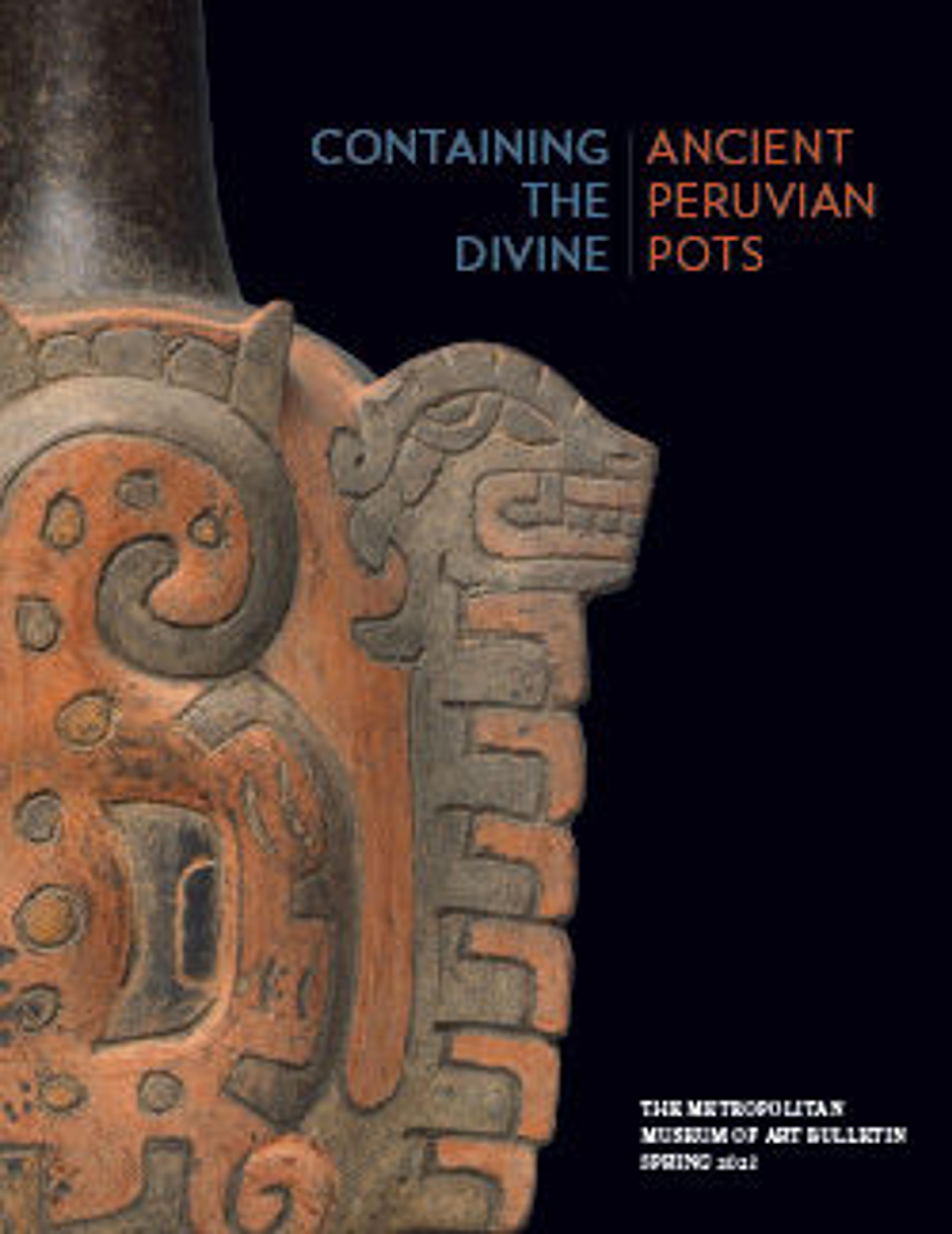Double-spout bottle with flying figure
Nasca artists of Peru's southern coast produced quantities of ceramic vessels in a variety of shapes. The surfaces of these vessels are usually very smooth and shiny, and—unlike contemporary wares from the North Coast—they are painted in as many as thirteen colors, including white, red, brown, gray, yellow, orange, and pink. The vibrant tones were achieved by applying slips colored with mineral-based pigments to the hardened, smooth surface before firing. This bottle is dome-shaped with two spouts joined by a straplike handle, hence the name "double-spout-and-bridge" bottle, a vessel type with a long history in the area. Two identical figures are shown, each grasping a head in one hand and a staff in the other. Their short bodies float sideways on a white background, and black outlining adds to the crispness of the complex imagery. The figures wear elaborate costumes consisting of a forehead ornament, mouth mask, pendant disks, necklace, tunic, loincloth, and cape, and have white, staring eyes and protruding tongues. Little faces animate the forehead ornament, the whiskers of the mouth mask, and staff, while profile heads appear on the cape. Such masked figures are common in Nasca art, where they are generally identified as mythical beings or deified ancestors.
Artwork Details
- Title:Double-spout bottle with flying figure
- Artist:Nasca artist(s)
- Date:300–500 CE
- Geography:Peru, South Coast
- Culture:Nasca
- Medium:Ceramic, slip
- Dimensions:H. 6 3/4 × Diam. 6 1/2 in. (17.1 × 16.5 cm)
- Classification:Ceramics-Containers
- Credit Line:Purchase, Arthur M. Bullowa Bequest, 1996
- Object Number:1996.174
- Curatorial Department: The Michael C. Rockefeller Wing
More Artwork
Research Resources
The Met provides unparalleled resources for research and welcomes an international community of students and scholars. The Met's Open Access API is where creators and researchers can connect to the The Met collection. Open Access data and public domain images are available for unrestricted commercial and noncommercial use without permission or fee.
To request images under copyright and other restrictions, please use this Image Request form.
Feedback
We continue to research and examine historical and cultural context for objects in The Met collection. If you have comments or questions about this object record, please contact us using the form below. The Museum looks forward to receiving your comments.
